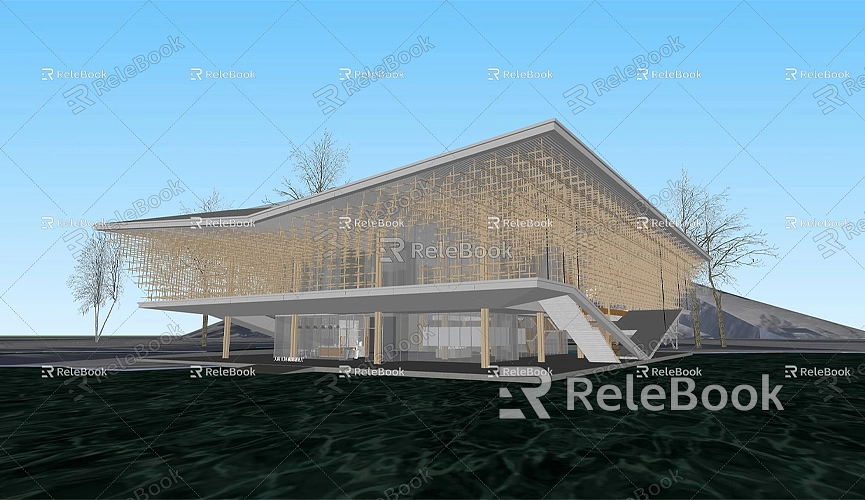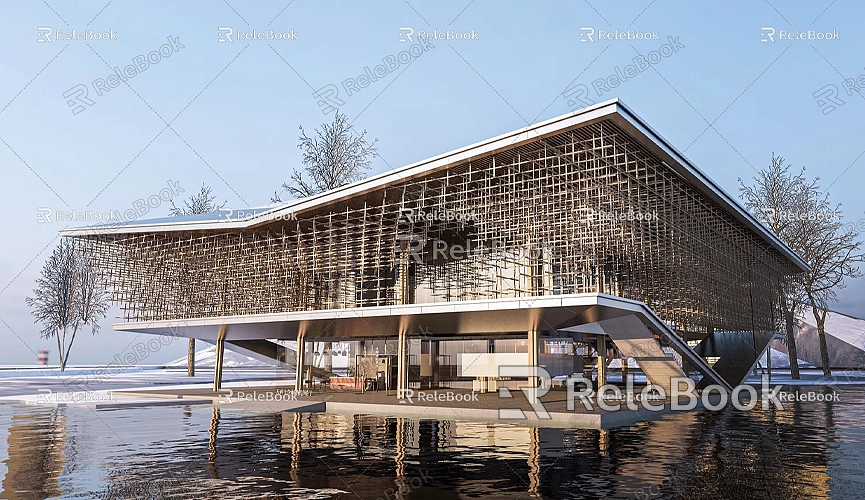How to Add Graphics to a Model in SketchUp
Adding graphics to your model during architectural design and 3D modeling can significantly enrich its visual impact and enhance clarity in design expression. Whether you're incorporating branding logos, text annotations, or images, effectively utilizing graphics can elevate the quality of your model. This article will provide a detailed guide on how to add graphics in SketchUp, along with practical tips and considerations to help you create more engaging 3D works.
Why Add Graphics in SketchUp?
Incorporating graphics into your design has numerous benefits. First, graphics make the model more dynamic and capture the audience's attention. Second, adding graphics can clearly convey the design intent. For example, including a company logo in an architectural model can help clients better understand the design direction. Additionally, graphics can serve as annotations, providing viewers with extra information.

Preparation
Before you begin, ensure that you have SketchUp installed and are familiar with its basic operations. If you're a beginner, consider going through some introductory tutorials to understand the software’s fundamental features. Once you're comfortable, you can start adding graphics to your model.
Steps to Add Graphics
There are several main methods for adding graphics in SketchUp. Below, each method is explained with detailed steps and considerations.
Using Image Files
One common method is to directly import image files into the model. This approach is suitable for adding company logos, background patterns, etc.
1. Select the Import Tool: In the toolbar, find the "File" menu and choose "Import."
2. Select the Image File: In the pop-up window, browse your files and select the image you wish to import. SketchUp supports various image formats such as JPG and PNG.
3. Set Import Options: In the import window, you can choose how to insert the image, including scaling or using the actual size. After selecting the appropriate option, click "OK."
4. Adjust the Image Position: Place the image in the appropriate location in the model, using the Move tool for fine adjustments.
This method is straightforward, but be mindful that imported images can increase file size, so choose image resolutions wisely.

Using the Materials Tool
Another effective method is to apply graphics to the surfaces of the model using the Materials Tool. This is ideal for adding textures or patterns to object surfaces.
1. Open the Materials Panel: In the right-side Materials panel, select the "Create Material" option.
2. Select an Image: In the Create Material window, choose "Image" as the material type, then click the "Select Image" button to choose the desired image file.
3. Adjust Material Properties: You can adjust various properties of the material in the window, such as opacity and glossiness, to achieve the desired effect.
4. Apply the Material: After completing the settings, use the Paint Bucket tool to apply the material to the model’s surfaces.
Using this method, you can seamlessly integrate graphics into the model's surfaces for a more cohesive visual effect.
Using the Text Tool
If you want to add text annotations to your model, you can use the Text Tool.
1. Select the Text Tool: Find the "Text" tool in the toolbar and click to activate it.
2. Draw a Text Box: Click and drag in the model to create a text box in an appropriate location.
3. Enter Your Text: In the pop-up text editing box, type in the text you wish to add.
4. Adjust Font and Style: You can choose different fonts, sizes, and styles to ensure the text is readable.
The Text Tool is excellent for adding labels or notes, making the model easier to understand.
Optimizing Graphic Display
After adding graphics, consider the following optimizations to enhance their appearance within the model:
- Adjust Position and Scale: Ensure the graphics are positioned and scaled appropriately, aligning with other elements.
- Use Transparency: When necessary, adjust the transparency of graphics to help them blend with the background.
- Regularly Check Appearance: View the model from different angles to ensure the graphics display well from all perspectives.
Combining High-Quality Resources
Using high-quality 3D textures and HDRIs can significantly enhance the visual quality of your models and virtual scenes. If you need numerous high-quality textures and HDRIs for your projects, you can download them for free from [Relebook](https://textures.relebook.com/). For exquisite 3D models, visit [Relebook](https://3dmodels.relebook.com/) to access a wide range of premium resources that support your design work.
Common Issues and Solutions
You may encounter some issues while adding graphics. Here are a few common problems and their solutions:
- Graphics Not Displaying: Ensure the imported image file format is correct and that the file path is accurate. If the image is too large, it may fail to import, so try using a smaller image file.
- Text Not Clear: Check the font size and color of the text to ensure it contrasts well with the background for easy readability.
- Unsatisfactory Material Effects: If the applied graphic material doesn’t look ideal, try adjusting the material’s glossiness and reflectivity to achieve a more realistic appearance.
Adding graphics in SketchUp is an important step in enhancing the quality of your model. By using different methods to thoughtfully integrate graphics into your design, you can improve visual impact and effectively communicate your design intent. We hope the tips and steps provided in this article help you add graphics more efficiently in SketchUp, making your models more vibrant and professional. With high-quality textures and models from Relebook, your design work will truly shine.

